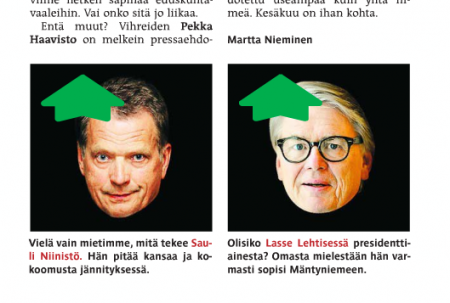Paris Review haastatteli John McPheetä pitkään ja hartaasti. Jos herran työ ei ole tuttua, kannattaa aloittaa vaikka The New Yorkerin arkistoista (A Fleet of One on maksumuurin ulkopuolella) tai sitten Amazon.comin kirjavalikoimasta. Haastattelu on lukemisen arvoinen, vaikka se alkaakin vähän hitaasti elämäkerturoinnilla.
Tässä muutamia makupaloja. Fiktio- ja faktakirjoittamisen erosta:
But once I started writing, I had to tell a story. It’s the story of a journey. Within that journey certain things happened, such as an encounter with a big grizzly. That grizzly encounter was a pretty exciting thing, and it happened near the beginning of the trip. That was somewhat inconvenient structurally, because it’s such a climactic event. But you can’t move that bear, because this is a piece of nonfiction writing.
Rinnastusten voima:
I knew where I was going to start, but I didn’t know the body of the thing. I went into a seminar room here at the university, and I laid the thirty-six cards out on the table. I just looked and looked at them. After a while I was looking at two cards: Upset Rapid, which is a big-time rapid in the Colorado River, and Alpinist. In Upset Rapid, Brower doesn’t ride the rapid. Why doesn’t he ride the rapid? His answer to Floyd Dominy is, “Because I’m chicken.” That’s a pretty strong scene. What next? Well, there are more than seventy peaks in the Sierra Nevada that were first ascended by David Brower, hanging by his fingernails on some cliff. “Because I’m chicken”? This juxtaposition is just loaded with irony, and by putting the Alpinist right after Upset Rapid, in the white space between those two sections there’s a hell of a lot of stuff that I don’t have to say. It’s told by the structure. It’s all crackling along between those two things. So I put those two cards side by side. Now there are thirty-four other parts there on the table.
You look for good juxtapositions. If you’ve got good juxtapositions, you don’t have to worry about what I regard as idiotic things, like a composed transition. If your structure really makes sense, you can make some jumps and your reader is going to go right with you. You don’t need to build all these bridges and ropes between the two parts.
Aiheiden yhdistämisestä:
I’d started with single profiles, and when I’d done enough of them, I began to want to do a double profile. Two people at once, with the idea that one plus one might equal more than two. Who would it be? A great example for a project like that would be Frank Gehry and Peter Lewis. This Peter Lewis is some character—a one-legged insurance billionaire who lives much of the year on one of the largest yachts in the world and was once caught carrying pot into New Zealand. And he donated the sixty million bucks to build the new library here on campus. And Frank Gehry is Frank Gehry. These two guys have to know each other—that library’s built here because Peter Lewis gave the money and said that Frank Gehry would be the architect. If you did a profile of Frank Gehry and a profile of Peter Lewis, and you put them in the same piece of writing, one plus one would add up to three point six.
Rakenteen vapauttavasta vaikutuksesta:
It sounds very mechanical, but the effect is the exact opposite. What it does is free you to write. It liberates you to write. You’ve got all the notes there; you come in in the morning and you read through what you’re going to try to write, and there’s not that much to read. You’re not worried about the other ninety-five percent, it’s off in a folder somewhere. It’s you and the keyboard. You get away from the mechanics through this mechanical means. The spontaneity comes in the writing, the phraseology, the telling of the story—after you’ve put all this stuff aside. You can read through those relevant notes in a relatively short period of time, and you know that’s what you want to be covering. But then you spend the rest of your day hoping spontaneous things will occur.
Paris Review’n Art of Nonfiction -sarjassa on julkaistu kaksi muutakin haastattelua, nimittäin Joan Didionin ja Gay Talesen, mutta niitä en ole ehtinyt vielä lukea.



